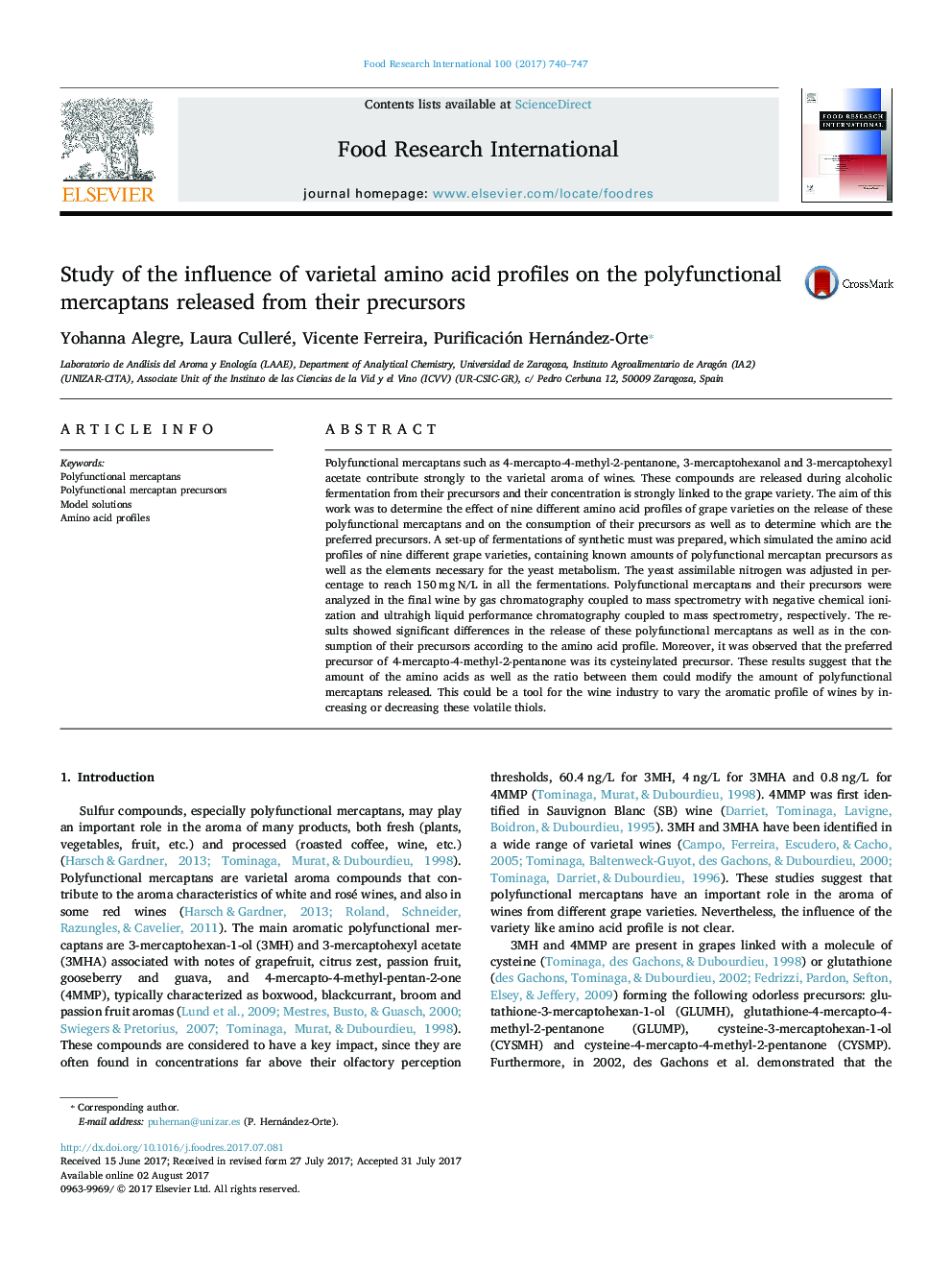| Article ID | Journal | Published Year | Pages | File Type |
|---|---|---|---|---|
| 5768029 | Food Research International | 2017 | 8 Pages |
â¢The amino acid profile varies the uptake of polyfunctional mercaptan precursors.â¢The release of polyfunctional mercaptans depends on the amino acid profiles.â¢Chardonnay-like profile must releases more compounds than others.â¢Î³-Aminobutyric acid diminishes the release of 4-mercapto-4-methyl-2-pentanone.â¢The main 4-mercapto-4-methyl-2-pentanone precursor is its cysteinylated precursor.
Polyfunctional mercaptans such as 4-mercapto-4-methyl-2-pentanone, 3-mercaptohexanol and 3-mercaptohexyl acetate contribute strongly to the varietal aroma of wines. These compounds are released during alcoholic fermentation from their precursors and their concentration is strongly linked to the grape variety. The aim of this work was to determine the effect of nine different amino acid profiles of grape varieties on the release of these polyfunctional mercaptans and on the consumption of their precursors as well as to determine which are the preferred precursors. A set-up of fermentations of synthetic must was prepared, which simulated the amino acid profiles of nine different grape varieties, containing known amounts of polyfunctional mercaptan precursors as well as the elements necessary for the yeast metabolism. The yeast assimilable nitrogen was adjusted in percentage to reach 150 mg N/L in all the fermentations. Polyfunctional mercaptans and their precursors were analyzed in the final wine by gas chromatography coupled to mass spectrometry with negative chemical ionization and ultrahigh liquid performance chromatography coupled to mass spectrometry, respectively. The results showed significant differences in the release of these polyfunctional mercaptans as well as in the consumption of their precursors according to the amino acid profile. Moreover, it was observed that the preferred precursor of 4-mercapto-4-methyl-2-pentanone was its cysteinylated precursor. These results suggest that the amount of the amino acids as well as the ratio between them could modify the amount of polyfunctional mercaptans released. This could be a tool for the wine industry to vary the aromatic profile of wines by increasing or decreasing these volatile thiols.
Graphical abstractDownload high-res image (301KB)Download full-size image
